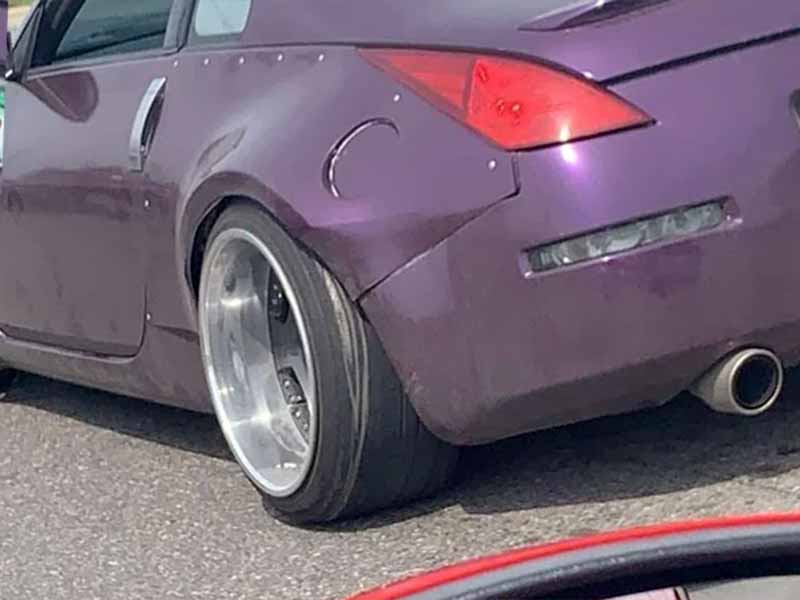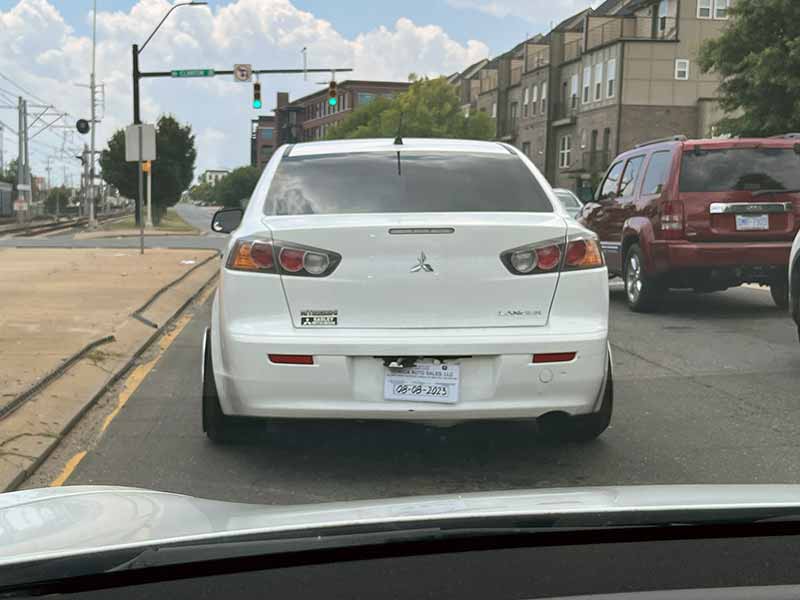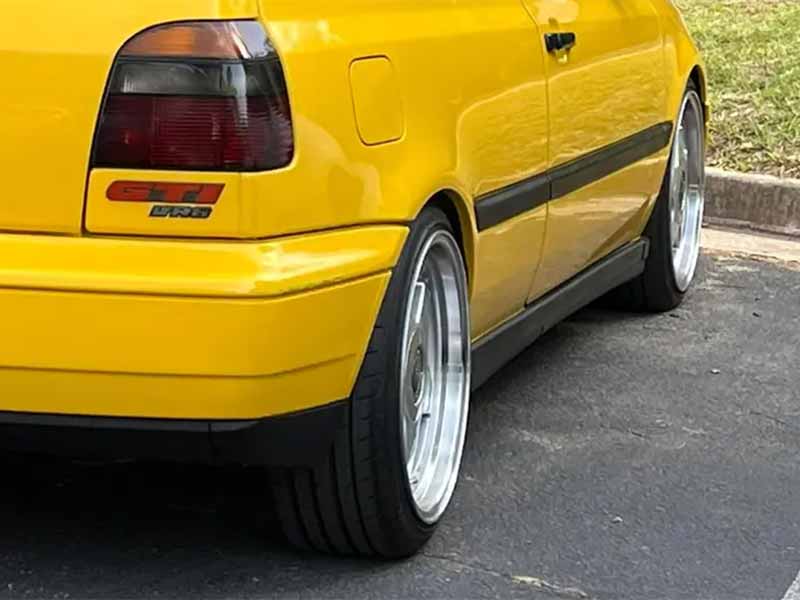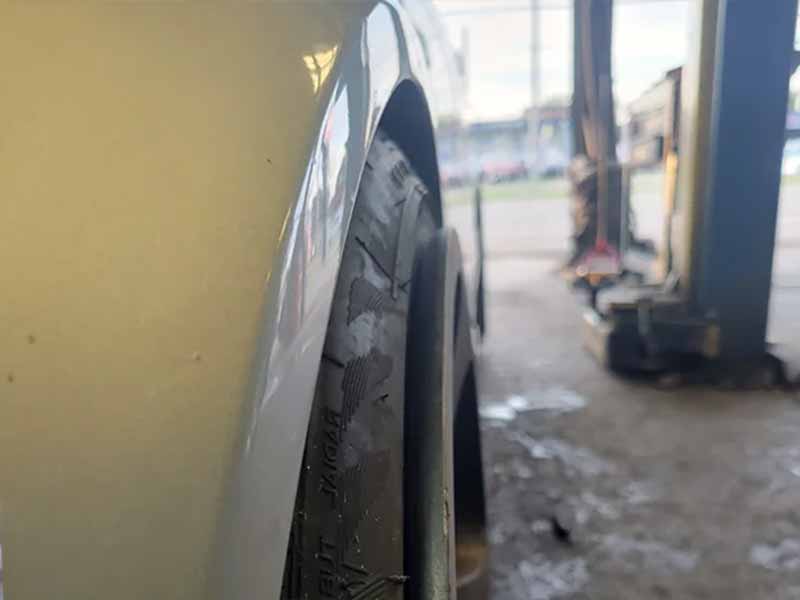So you’ve heard about “stretching tires” and wondered if they are the style or performance upgrade you’ve been searching for, or are they a risky choice you might regret? Let’s delve into the world of stretched tires and sort out the pros, cons, and everything in between.
Stretched Tires Vs Regular Tires
Stretched tires are tires that have been mounted on wider rims than they were originally designed for. While they offer a unique aesthetic and potential handling benefits, they also come with safety risks, legal issues, and typically a shorter lifespan compared to regular tires.
In this article, we’ll break down what tire stretching is, its pros and cons, how it affects the lifespan of the tires, and address frequently asked questions including its legality and special considerations for trucks and unique rims.
Let’s take a closer look.

What is Tire Stretching?
Tire stretching is the practice of mounting a tire onto a wheel rim that’s wider than the tire’s original design specifications. Imagine putting a small rubber band around a big jar. It’s similar: you’re making the tire’s sidewalls stretch outward to fit onto a larger rim.
Why Do People Stretch Tires?
What’s the point of stretching tires? The reasons vary, but here are a few common ones:
- Looks: Some people like the aesthetic or the “cool” look of stretched tires.
- Handling: Some drivers believe it gives better road feedback.
- Fitting Large Rims: If you want to install larger rims on your car, sometimes stretching the tire is necessary.
The Process of Stretching a Tire
Stretching a tire involves a specialized procedure that you should never try to do at home. Here’s how it usually goes:
- Removing the Old Tire: The old tire is removed from your car’s rim.
- Preparing the New Tire: The new tire that will be stretched is prepared by applying a lubricant around the bead (the edge of the tire that sits on the rim).
- Mounting the Tire: Using a tire mounting machine, the new tire is carefully placed onto the rim.
- Inflation: The tire is inflated slowly, making the bead of the tire move until it seats properly against the rim.
- Final Inspection: A trained technician will inspect the tire to make sure it has been stretched safely and properly.
The Role of Tire Bead and Air Pressure
- Tire Bead: This is the edge of the tire that sits against the rim. During stretching, this bead expands but still needs to sit securely against the rim for safety.
- Tire Pressure: It’s extremely important to maintain the correct air pressure in a stretched tire. Incorrect pressure could lead to the bead slipping from the rim, causing an accident.
Can Any Tire Be Stretched?
No, not all tires are suitable for stretching. It’s essential to consult with a tire expert or technician who can determine if a particular tire can be safely stretched to fit a larger rim.
Safety First!
Tire stretching should only be done by professionals who understand the risks and the technical details of the process. It’s not something for a DIY weekend project.

Pros and Cons of Stretched Tires
Deciding between stretched and regular tires involves more than just personal preference. Each option comes with its set of advantages and disadvantages. Below, we break down the pros and cons to help you make an informed decision.
The Pros of Stretched Tires
Enhanced Aesthetics
- Unique Look: Stretched tires give a vehicle a unique, custom appearance that many find attractive.
Potential Handling Benefits
- Steering Response: Some drivers feel that stretched tires offer improved steering response and road feedback.
Compatibility with Larger Rims
- Customization: If you’re looking to fit larger rims on your vehicle, stretching your existing tires might be necessary.
The Cons of Stretched Tires
Safety Concerns
- Reduced Traction: Less of the tire’s surface makes contact with the road, which can lead to decreased grip.
- Risk of Debeading: The bead may not sit securely on the rim, increasing the chances of it coming off, especially if air pressure is not properly maintained.
Legal Issues
- Possible Illegality: As mentioned before, stretched tires may be illegal in some jurisdictions, which could lead to fines or even the impounding of your vehicle.
Shorter Lifespan
- Wear and Tear: Stretched tires generally wear out more quickly than regular tires.
Financial Impact
- Increased Costs: Between potential fines, more frequent replacement, and possible insurance complications, stretched tires could be more costly in the long run.
Special Considerations for Trucks
Can You Air Down Stretched Tires on a Truck?
- Not Recommended: Airing down stretched tires, especially on a heavy vehicle like a truck, increases the risk of debeading and should generally be avoided.

Stanced: Stretched Tire and Negative Camber
In the automotive world, trends come and go, but some become iconic combinations. One such combination is “stanced” vehicles, which pair a stretched tire with negative camber. But what does this mean, and what are the implications for your ride?
What Is Negative Camber?
Before we dive into the combined effect, let’s understand what negative camber is:
- Definition: Camber is the angle of the wheels relative to the road. Negative camber means the top of the wheels tilt inward.
- Purpose: This setup is often used to improve cornering performance, as it allows for better road grip during sharp turns.
The Appeal of a Stanced Vehicle
- Aesthetic Value: Both a stretched tire and negative camber contribute to a striking, customized appearance.
- Performance Aspects: While a stretched tire alone might offer some handling benefits, when combined with negative camber, these effects can be amplified, particularly in cornering scenarios.
Pros and Cons of a Stanced Setup
Advantages
- Improved Steering Response: The combination of a stretched tire and negative camber can offer enhanced steering capabilities.
- Unique Look: There’s no denying that a stanced vehicle turns heads. It’s a bold statement of personal style.
Disadvantages
- Safety Risks: Combining two modifications that individually pose safety concerns can result in even more significant risks, such as a higher chance of tire debeading.
- Legal Implications: Both a stretched tire and negative camber modifications may be restricted or illegal in certain jurisdictions.
Additional Precautions
If you decide to go down the route of having a stanced vehicle, extra precautions are necessary:
- Expert Consultation: Always consult with automotive professionals who have experience in both a stretched tire and negative camber setups.
- Ongoing Maintenance: The setup will require frequent checks and potential adjustments to ensure everything is aligned correctly and safely.

Are Stretched Tires Legal?
When it comes to the legality of stretched tires, there’s no one-size-fits-all answer. Laws and regulations regarding stretched tires differ depending on your location. In some areas, having stretched tires on your vehicle might be perfectly fine, while in others, it could lead to fines, penalties, or even the confiscation of your vehicle.
State and Local Laws
In the United States, individual states have their own sets of vehicle regulations, which sometimes include specific rules about tire stretching. Some states are more lenient, while others strictly prohibit the practice.
- State Inspections and Safety Tests: If your vehicle needs to pass these types of tests, stretched tires may cause it to fail.
- Law Enforcement: Police officers can pull you over and issue a citation if they deem your tires unsafe.
What to Check Before You Stretch
Before you decide to stretch your tires, make sure you do the following:
- Consult Local Laws: A quick search online or a call to your local Department of Motor Vehicles can give you the information you need.
- Speak to an Expert: A professional can guide you on the best course of action and let you know if stretching your tires would be a legal issue.
- Check Vehicle Insurance: Your insurance policy might have clauses about modifications. Make sure stretching your tires doesn’t void your coverage.
Consequences of Illegal Stretching
- Fines and Penalties: If you’re caught with illegally stretched tires, you could face fines.
- Voided Insurance: In case of an accident, your insurance might not cover you if you have illegally stretched tires.
- Safety Risks: Legal regulations are often based on safety concerns. If stretched tires are illegal in your jurisdiction, it’s often for a good reason.
Safety Concerns
One of the biggest questions is are stretched tires safe? The answer is complex and depends on a range of factors, including how much the tire is stretched, the quality of the tire and rim, and the conditions under which you drive.
Risks If You Run Stretched Tires
Stretched tires come with a set of risks that you should be aware of:
- Decreased Traction: Because less of the tire is in contact with the road, stretched tires often offer less grip.
- Higher Chance of Debeading: The bead of the tire could slip off the rim, leading to a rapid loss of air and possible loss of control of the vehicle.
- Reduced Sidewall Integrity: The sidewalls of the tire are stretched thin, which can make them more susceptible to damage like punctures.
Comparing Risks: Stretched Vs. Regular Tires
- Regular Tires: These tires are designed to fit the rim perfectly. This provides better traction and usually ensures that the bead stays in place.
- Stretched Tires: The fit is not natural, and the tire is under constant stress, increasing the risk factors mentioned above.
The Importance of Air Pressure
Proper pressure is crucial for any tire but becomes even more essential when dealing with stretched tires.
- Over-Inflation: Too much air can cause the tire to burst.
- Under-Inflation: Too little air can make it easier for the bead to slip off the rim.
Either scenario could lead to a dangerous situation, so regular pressure checks are vital.
The Role of the Tire Bead in Safety
The tire bead is the part of the tire that makes contact with the rim. A secure bead is crucial for keeping the tire on the rim, especially when it’s stretched. Always make sure the bead is seated correctly and hasn’t been damaged during the stretching process.
Professional Installation and Inspection
Given the risks, it’s crucial to have stretched tires installed by professionals who can ensure the bead is seated correctly and that the tire pressure is appropriate for your specific setup.

How Long Do Stretched Tires Last?
The longevity of any tire depends on various factors like driving conditions, tire maintenance, and tire quality. However, when it comes to stretched tires, there are additional variables that could affect how long they last.
Factors Affecting Lifespan
- Driving Conditions: Driving on rough terrain or in harsh weather conditions can cause stretched tires to wear out faster.
- Tire Pressure: Incorrect tire pressure can cause uneven wear, reducing the lifespan of the tire.
- Driving Style: Aggressive driving like rapid acceleration and sharp turns can also reduce the lifespan.
Stretched Tires Vs. Regular Tires
- Regular Tires: Typically, regular tires that are well-maintained can last anywhere from 30,000 to 60,000 miles, depending on the manufacturer’s specifications.
- Stretched Tires: These generally have a shorter lifespan because they’re under constant stress. Exact estimates vary, but don’t be surprised if they wear out considerably faster.
Signs of Wear and Tear
Keep an eye out for these signs that your stretched tires are nearing the end of their lifespan:
- Tread Depth: Reduced tread depth is a clear sign of wear.
- Visible Damage: Cracks, bulges, or punctures are severe signs that the tire is at risk.
- Handling Issues: If the car doesn’t handle as well as it used to, it might be due to worn-out tires.
Maintenance Tips for Longer Life
If you decide to go with stretched tires, you can take certain steps to extend their life:
- Regular Inspection: Check your tires frequently for any signs of wear or damage.
- Maintain Correct Pressure: Use a tire pressure gauge to keep your tires inflated to the proper level.
- Professional Checks: Schedule regular visits to a tire technician for expert evaluations.
Resources
Below are some links you may find helpful when learning about tires
Final Thoughts
Choosing between stretched and regular tires is more than a matter of style; it’s about balancing aesthetic preferences with safety, legality, and longevity.
Stretched tires offer a distinct look and potentially better steering response, but they also come with downsides like reduced safety and a shorter lifespan. Trucks and unique rims present their own challenges when it comes to stretched tires, requiring additional considerations. As with any car or truck modification, it’s crucial to consult professionals and adhere to local laws.
Good luck and happy motoring.






